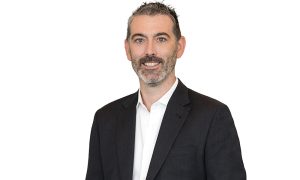Asbestos: There’s no time to lose
The IOSH talks about raising awareness of the issue of asbestos in the region

Craig Foyle, IOSH president, and Charles Faulkner, head of Environment, Health and Safety at Anthesis, talk about the Institution of Occupational Safety and Health (IOSH) ‘No Time to Lose’ campaign, which is focused on raising awareness of the issue of asbestos in the region.
What is the prevalence of asbestos usage in the UAE construction industry? Do you have any figures or statistics you can share?
The UAE banned asbestos products in 2006, but enforcement is difficult and challenging. Despite the ban, in 2009 the UAE consumed more than 26,000 tonnes of asbestos (according to the US Geological Survey).
According to Laurie Kazan-Allan of the International Ban Asbestos (IBA) Secretariat, while asbestos manufacture is prohibited, UAE legislation does not prohibit the import, production or use of asbestos-cement water pipes. As well as the ongoing use of asbestos, other hazardous practices persist in the UAE, such as the demolition of buildings containing asbestos, the reuse of discarded asbestos products and the haphazard disposal of asbestos-contaminated waste.
It is estimated that 23 people died in the UAE from asbestos-related illnesses (mesothelioma, lung cancer, etc) in 2016. However, this masks the true number of cases. It is likely that huge numbers of expatriate workers may have been exposed over the years and that they would have died in other countries and might be counted in those countries’ statistics.
The WHO estimates that about 107,000 people die every year as a result of asbestos-related diseases. There is no known cure – if a doctor says you have one of those asbestos-related diseases, it’s effectively a death sentence. By the time they diagnose it, it’s too late to undergo any therapy or treatment. It’s a fatal disease.
How has the UAE government responded to the issue of asbestos usage in construction?
Legislation is in place at both the federal and local level. Asbestos was federally banned in 2006, but there are also green building regulations and ESTIDAMA regulations at a local level which state that you can’t use asbestos on new construction projects.
There’s actually a legal requirement to use substitute materials – for every asbestos material that’s been produced, whether it’s a gasket, roof sheeting or insulation, there’s a non-asbestos substitute that can be used in its place. All of these materials are readily available in the market.
Regulatory authorities are trying to promote asbestos awareness, but it’s also good that organisations like IOSH have campaigns like ‘No Time to Lose’ to try and promote awareness further.
How has the market responded to the ‘No Time to Lose’ campaign? Has there been a tangible impact in terms of reduced usage of asbestos?
It’s very early days for the campaign, so evidence of attitude change and behaviour change will not be seen for a while. However, there’s a lot we can do through IOSH members working for top companies on major construction contracts, as well as our supporter companies with operations in the UAE, to raise awareness of the dangers of asbestos and all the many ways it might be present throughout supply chains.
Flyers have been translated in Arabic and other languages, and we will work through our Middle Eastern branches to distribute them, supporting asbestos awareness training wherever possible. Our branch members will be educating throughout their organisations and supply chains.
The biggest challenge facing asbestos management in the Middle East is awareness. This region in particular has a very low level of awareness and understanding [of the dangers of asbestos usage]. Everybody assumes that because the UAE – and Dubai – is new build and new construction, how can there be asbestos? But the ban only came into effect relatively recently and it varies from country to country in the region. Also, there is significant evidence to show that asbestos is making its way into new construction builds.
How is IOSH driving home the message of reducing the use of asbestos and educating the workforce?
Similar to the International Labour Organisation’s Safe Youth @ Work programme, the campaign has been developing materials to raise awareness of asbestos risks among young people aiming to reach more vulnerable workers in less regulated places worldwide. This campaign will continue throughout this year and into 2019.
With the ‘No Time to Lose’ campaign, it’s about breaking it down to the different workplaces – that can be through the sharing of materials and presentations, where a lot of organisations translate them into different languages. That gives us access to a wider audience. A lot of it is also about raising awareness on the job and teaching people about what it is, and the dangers it presents.

























